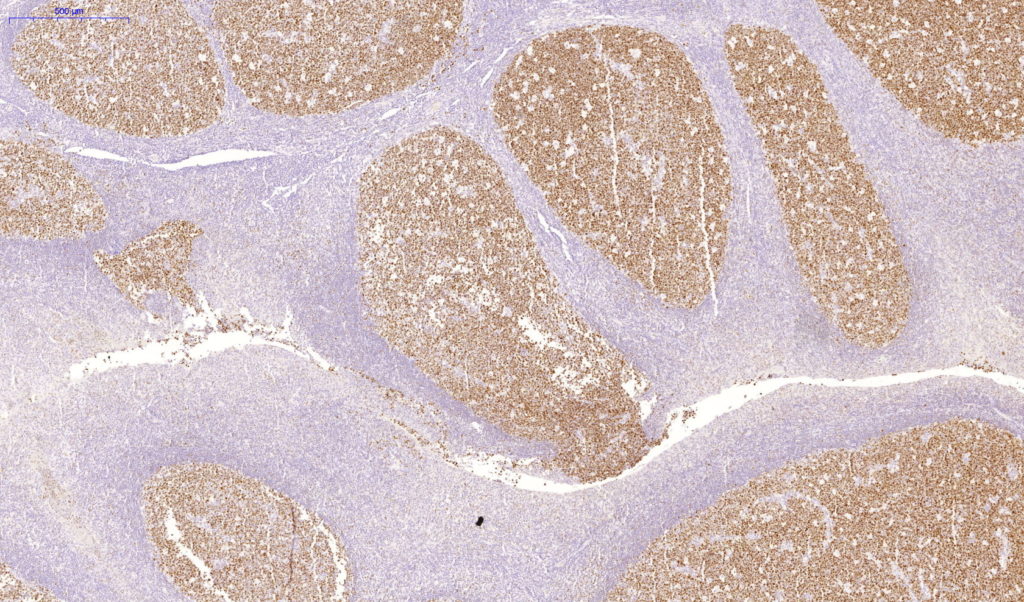Mouse Monoclonal Antibody
Specification:
The Bcl-6 protein (B-cell CLL/lymphoma 6, zinc finger protein 51) is a nuclear zinc finger transcription factor with an N-terminal POZ domain. Bcl-6 functions as a transcriptional repressor and is necessary for germinal centre formation. The Bcl-6 protein acts as a sequence-specific repressor of transcription, and has been shown to modulate the transcription of START-dependent IL-4 response of B-cells. Mutations of the Bcl-6 gene have been found in normal germinal centre B-cells, and even though it is not clear what role they play in lymphomagenesis, it appears that they may disrupt its negative autoregulation and in this manner promote lymphoma growth.
Availability:
| Catalog No. | Contents | Volume |
| ILM0746-C01 | Bcl-6 | 0,1 ml concentrate |
| ILM0746-C05 | Bcl-6 | 0,5 ml concentrate |
| ILM0746-C1 | Bcl-6 | 1,0 ml concentrate |
Intended use: For Research Use Only
Reactivity: Human, others not known
Clone: MX042
Species of origin: Mouse
Isotype: IgG
Control Tissue: Tonsil
Staining: membranous
Presentation: 1ml Bcl-6 tissue culture supernatant contains 15mM Azide
Application and suggested dilutions:
Pre-treatment: Heat induced epitope retrieval in 10 mM citrate buffer pH6.0 for 20 minutes is required for IHC staining on formalin-fixed, paraffin embedded tissue sections.
- Immunohistochemical staining of formalin-fixed, paraffin embedded tissue section (dilution up to 1:100)
The optimal dilution for a specific application should be determined by the investigator.
Note: Dilution of the antibody in 10% normal goat serum followed by a Goat anti-Mouse secondary antibody-based detection is recommended.
Storage & Stability: Store at 2-8 °C. Do not use after expiration date printed on the vial.
Reference:
- Dwivedi A, Mehta A, Solanki P. Evaluation of immunohistochemical subtypes in diffuse large B-cell lymphoma and its impact on survival. Indian J Pathol Microbiol. 2015 Oct-Dec; 58(4):453-8
- Huang C, Melnick A. Mechanisms of action of BCL6 during germinal center B cell development. Sci China Life Sci. 2015 Dec;58(12):1226-32

